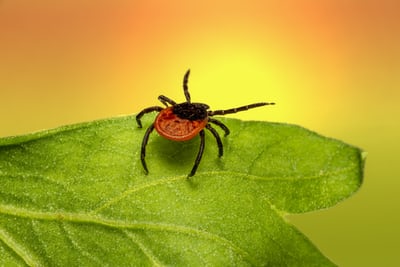1 Cronyism
http://en.wikipedia.org/wiki/Cronyism
Cronyism is partiality to long-standing friends, especially by appointing them to positions of authority, regardless of their qualifications. Hence, cronyism is contrary in practice and principle to meritocracy.
Cronyism exists when the appointer and the beneficiary are in social contact; often, the appointer is inadequate to hold his or her own job or position of authority, and for this reason the appointer appoints individuals who will not try to weaken him or her, or express views contrary to those of the appointer. Politically, “cronyism” is derogatorily used.
The word “crony” first appeared in 18th century London, according to the Oxford English Dictionary to be derived from the Greek word χρόνιος (chronios), meaning “long-term”.[1]
The word crony also appears in the 1811 edition of Grose’s Vulgar Tongue with a decidedly non-collegiate definition, placing it firmly in the cant of the underworld.[2] A less likely source is the Irish term Comh-Roghna [koˈronə],[dubious – discuss] which translates to “close pals”, or mutual friends.
2 Cannibalism
http://en.wikipedia.org/wiki/Cannibalism_(zoology)
In zoology, cannibalism is the act of one individual of a species consuming all or part of another individual of the same species as food. Cannibalism is a common ecological interaction in the animal kingdom and has been recorded for more than 1500 species. It does not, as once believed, occur only a result of extreme food shortages or artificial conditions, but commonly occurs under natural conditions in a variety of species. Cannibalism seems to be especially prevalent in aquatic communities, in which up to approximately 90% of the organisms engage in cannibalism at some point of the life cycle. Cannibalism is also not restricted to carnivorous species, but is commonly found in herbivores and detritivores.
Sexual cannibalism
Sexual cannibalism is a special case of cannibalism in which a female organism kills and consumes a conspecific (same species) male before, during, or after copulation. Rarely, these roles are reversed. Sexual cannibalism has been recorded in the female redback spider, black widow spider, praying mantis, and scorpion, among others.
Size-structured cannibalism
Size-structured cannibalism, in which large individuals consume smaller conspecifics, is more common. In such size-structured populations, cannibalism can be responsible for 8% (Belding’s Ground Squirrel) to 95% (dragonfly larvae) of the total mortality, making it a significant and important factor for population and community dynamics. Such size structured cannibalism has commonly been observed in the wild for a variety of taxa.
Cannibalistic infanticide
Another common form of cannibalism is filial cannibalism (a form of infanticide) where adults eat the young of their own species (sometimes even their own immediate offspring). Classical vertebrate examples include the chimpanzees where groups of adult males have been observed to attack and consume conspecific infants, and cats, elephants, dogs, baboons, bears, lions, and some types of fish, where adult males commonly kill infants when they take over a new harem after replacing the previous dominant males. In agricultural settings, pigs are known to eat their own young, accounting for a sizeable percentage of total piglet deaths.
There has been sightings of infanticide in the leopard population.
Particularly in fish, one can discern
• total filial cannibalism, where a parent eats the whole brood
• cases where a parent eats only part, e.g. sand gobies Potamoschistus minutus can eat 40% of their eggs without reducing the outcome of their reproductive efforts.
Intrauterine cannibalism
Intrauterine cannibalism is a behaviour in some carnivorous species, in which multiple embryos are created at impregnation, but only one or two are born. The larger or stronger ones consume their less-developed siblings as a source of nutrients.
In adelphophagy, the fetus eats sibling embryos, while in oophagy it feeds on eggs. Intrauterine cannibalism is known to occur in lamnoid sharks and in the Fire Salamander, as well as in some teleost fishes.
The Carboniferous period chimaera, Delphyodontos dacriformes, is suspected of having practiced intrauterine cannibalism, also, due to the sharp teeth of the recently born (or possibly aborted) juveniles (adults are unknown), and the presence of fecal matter in the juveniles’ guts.
3 Prolicide and Feticide
Prolicide is the crime of destroying one’s offspring, either in the womb or soon after birth. It is meant to include both infanticide (intentionally causing the death of an infant), and feticide (intentionally causing the death of a fetus). The word prolicide derives from the Latin words proles meaning “offspring” and caedere meaning “to cut or kill”.
4 Ecto and Endoparasites
http://www.soton.ac.uk/~ceb/EctoEndodirectory/frontectoendo.htm
Ectoparasite: a definition:
Ectoparasites are parasites which live on the surface of a host and are dependent on at least one gene or its product from that host to complete their own life-cycle.
Endoparasite: a Definition
Endoparasites are parasites which live within the body of a host and are dependent on at least one gene or its product from that host to complete their own life-cycle.
http://wiki.answers.com/Q/How_are_ectoparasites_different_from_endoparasites
How are ectoparasites different from endoparasites?
parsites are of two types- ectoparasites and endoparasites……………
endoparasites are those parasites which live inside the body of its host.
ectoparasites are those parasites which live outside the body of the host.
endoparasites take up the food that the host eats as they live inside the body of the host. eg- worms inside the stomach take up the digested food from the stomach.
ectoparasites, as they live outside the body of the host take up the nutrition from outside the body of the host. eg- mosquitoes suck blood from our body.




